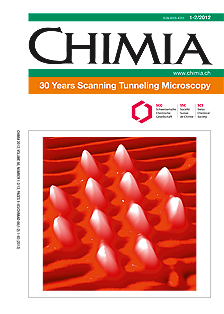Electron Transport at Surfaces and Interfaces
DOI:
https://doi.org/10.2533/chimia.2012.23Keywords:
Ballistic electron emission microscopy, Bi(111), C60, Electron transport, Ptcda, Scanning tunneling potentiometryAbstract
Here we present two techniques which give insight on transport phenomena with atomic resolution. Ballistic electron emission microscopy is used to study the ballistic transport through layered heterogeneous systems. The measured ballistic fraction of the tunneling current provides information about lossless transport channels through metallic layers and organic adsorbates. The transport characteristics of Bi(111)/Si Schottky devices and the influence of the organic adsorbates perylene tetracaboxylic dianhydride acid and C60 on the ballistic current are discussed. Scanning tunneling potentiometry gives access to the lateral transport along a surface, thus scattering processes within two-dimensional electron systems for the Bi(111) surface and the Si(111)(?3 × ?3)-Ag surface could be visualized.Downloads
Published
2012-02-29
Issue
Section
Scientific Articles
License
Copyright (c) 2012 Swiss Chemical Society

This work is licensed under a Creative Commons Attribution-NonCommercial 4.0 International License.
How to Cite
[1]
C. A. Bobisch, R. Möller, Chimia 2012, 66, 23, DOI: 10.2533/chimia.2012.23.







